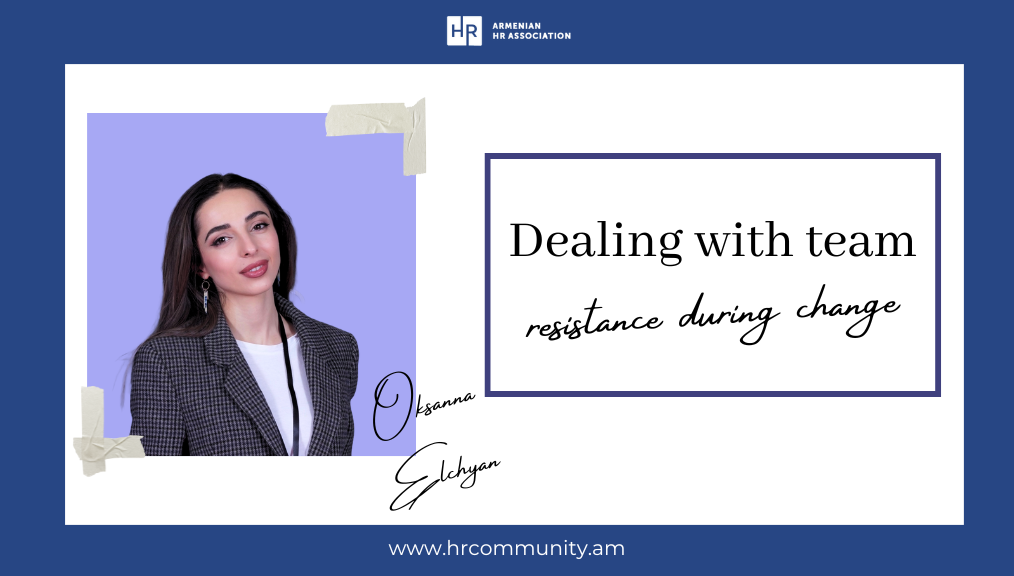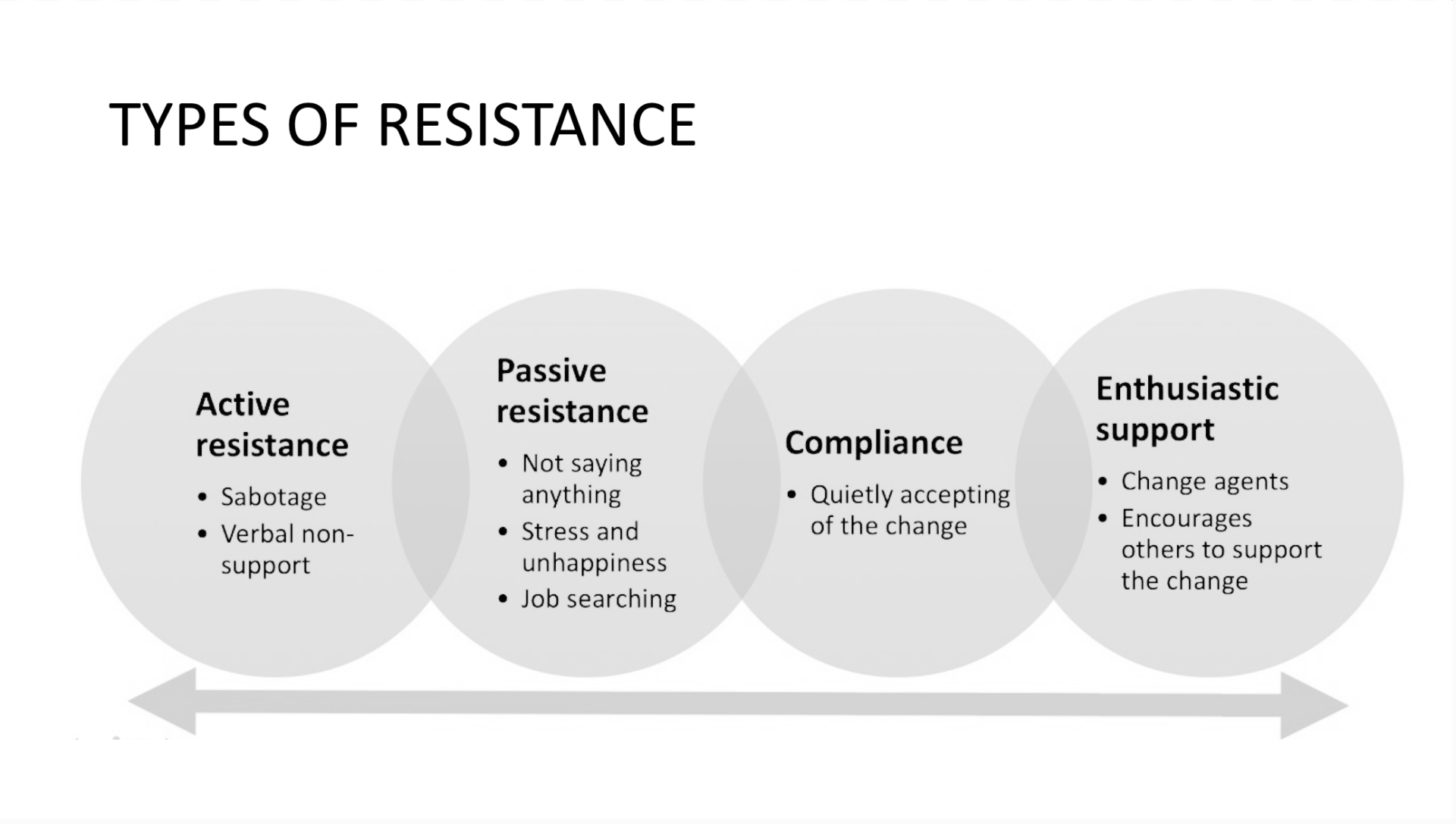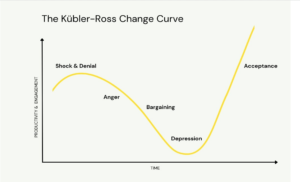- November 1, 2024
- Posted by: Admin HRCommunity
- Category: Blog


In this ever-evolving world, the only constant is change. Whether change leads to positive growth or a desert of frustration and declined performance, depends on how we navigate the journey and manage the inevitable resistance. Before diving into solutions to overcome resistance, it’s crucial to understand its root causes. Resistance arises from two main factors: emotions—specifically fear, a lack of safety — and a lack of information and knowledge.
Different types of resistance come with distinct emotions:
- Active Resistance: This includes clear verbal statements from team members denying or refusing the change, often accompanied by actions that hinder the change process.
- Passive Resistance: Though not verbally stating, people in this state are stressed and unhappy, often seeking ways to escape the situation, such as job searching.
On the flip side, there are two conditions contrary to resistance:
- Compliance: Quietly following the change process without objection.
- Active Support: Promoting the benefits of the change enthusiastically.
Ignoring resistance risks undermining the benefits and growth that positive change can bring. In practice, we often see that those leading the change process may not fully engage with proven methodologies or carefully select


the most effective strategies for implementation. This lack of a knowledge-based approach can foster office politics and internal friction. So, what are the best strategies to overcome resistance?
- Communication: Clear communication is crucial. Fear fills the gap left by poor communication with negativity and frustration.
- Build Trust: Trust isn’t built overnight, but without it, communication is ineffective. Involve people in decision-making and assign them roles during the change process.
- Support People: Whether through information, learning materials, or emotional support, assistance is essential.
- Empower People: Highlight individual strengths and show how they can contribute to the change process. Collaborate rather than direct.
Empathy is key to genuine support and empowerment. Acknowledge fears and validate feelings while guiding people to overcome them.
While emotional factors are significant, positive change also requires proper knowledge and effective tools. Let’s explore some proven models:
1.Kotter’s 8-Step Model: Emphasizes the importance of creating a sense of urgency for change, as without it, people tend to procrastinate—much like starting a new exercise routine on Monday, next month, or in the new year.
2. Kubler-Ross Change Curve: Describes the stages of denial, anger, bargaining, and depression before acceptance, each requiring appropriate communication.
3. ADKAR Model: Ensures awareness of the issues driving change, helping people understand the reasons behind the process.
As noted in the book Thinking, Fast and Slow, our brains are wired to absorb information better through storytelling than plain text. Developing storytelling skills and using them in interactions during change can significantly aid in overcoming team resistance.
In conclusion, change is a journey undertaken together. With mutual support and collaboration, this journey has every chance of leading to something beautiful and meaningful. Thank you!
Article author: Oksanna Elchyan
DisruptHR Yerevan 2024


